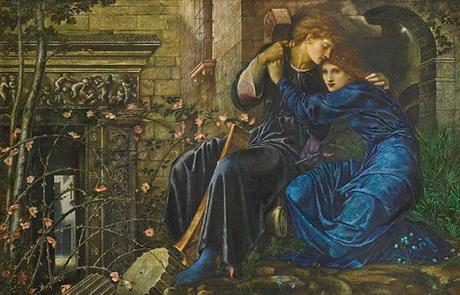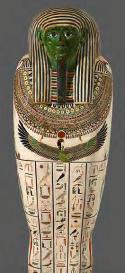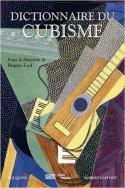Art Of The Day Weekly
#530 - from 27 October 2018 to 31 October 2018

Edward Burne-Jones, Love among the ruins, 1870-1873, oil on canvas, 95,3 x 160 cm, private collection.
iN THE AIR
Burne-Jones, the ice-cold beauty of the preraphaelites
LONDON – The English preraphaelites, like the French Impressionists, the German Expressionists, or the Italian macchiaioli is a national school that inspires regular retrospectives and which bears being moved abroad quite well. As in the case of a rock star, no one seems to grow weary of the repeated shows. We recall with pleasure a beautiful group retrospective in Birmingham and London in 2012, a comparison with Van Eyck in 2017 at the National Gallery, and a focus on Rossetti in Liverpool in 2003. Now we have Burne-Jones, the painter of well-built women and melancholic heroes at the Tate Britain, for the first time since the exhibition on the centennial of his birth, in 1933. William Morris’s great friend is here with all his court and we are enlightened by his metallic colors, his reflections, the virtuosity of his drawing, the multiplicity of his supports - painted glass or tapestries -. This is a unique opportunity to bring together ensembles that are now scattered. He was a great amateur of cycles, and spent years perfecting them. After his demise in 1898, Burne-Jones fell into oblivion, but he has managed a come-back, and the public at large loves his cold beauties. Others have varying opinions, but the pity-less critic Jonathan Jones from the Guardian feels his art shows “how boring beauty can be”.
• Edward Burne-Jones at the Tate Britain, from 24 October 2018 to 24 February 2019.
EXHIBITIONS

Coffin of Psametik, 664-526 B.C., painted wood, 188 x 54 x 46 cm, donated by G. de Saint-Ferriol, 1916, Ville de Grenoble / Musée de Grenoble - J.-L. Lacroix.
Enter the temple of Karnak
GRENOBLE – In cooperation with the Louvre museum, the one of Grenoble invites visitors to enter a sacred site of all times. Indeed, it presents a flashback of thirty centuries - a little less than indicated by Napoleon in his famous remark when facing the Egyptian pyramids - to discover the temple of Karnak, that stood in the centre of the town of Thebes, and the clergy of Ammon. This is a good opportunity to recall the wealth of the Egyptian collections in France, aside from Paris, and Grenoble, where Champollion worked in a library and for whom a high school is named after, is particularly doted in this sense. The count of Saint-Ferriol had brought back some remarkable pieces since the Monarchie de Juillet, a perfect example of the rural cultivated men who furnished their castles - his was in Uriage - with archeological pieces picked up here and there during their Grand Tour of Napoleon’s battles.
• Servir les dieux d’Egypte at the musée de Grenoble, from 25 October 2018 to 27 January 2019.tm

Frans Pourbus de Jonge, Portrait of Karel van Arenberg’s family with Anna van Croy, circa 1593 © Bruno Vandermeulen - KU Leuven
A portrait of the Arenbergs
LOUVAIN – Like the Rothschilds, the Alba or the Thurn & Taxis, the Arenbergs are among the important European families. Natives of Leuwen, who for five centuries befriended the high and mighty, they had kings, princesses and brave military leaders visit and stay in their lavish castles of Heverlee and Enghien, as well as masterpieces of art. They had at hand written music scores by Vivaldi as well as the medieval roll known as theRouleau d’Arenberg, and major works by the great masters that are now scattered among the major museums in the world. From Dürer to Rubens, including Pourbus, a part of this collection has travelled from the Met in New York, the National Gallery in London and the Kunsthistoriches in Vienna for this temporary exhibition.
• Le Pouvoir et la beauté. Les Arenbergs at the M-Museum, from 26 October 2018 to 20 January 2019.
Exile according to Beckmann
MADRID – Max Beckmann (1884-1950), the German Expressionist who slipped to The Netherlands during Nazism and who spent the last part of his wandering life in America – which was not uncommon for the artists of the Weimar – knew enough about exile. The exhibition delves into this theme, and not only explicitly. Exile is also the alienation one experiences in a city, or the loss of identity one undergoes in a world that moves too quickly.
• Beckmann. Figuras del exilio at the Thyssen-Bornemisza museum, from 25 October 2018 to 27 January 2019.
BOOKS
A bible on Cubism
Due undoubtedly to a race against time to put out the book, this edition has some shortcomings that are regretful for a collection of this quality: the alphabetical order is not always respected -such as Puteaux before Primitivisme, Charles Ratton placed under the letter C, or some shuffling about with the dates, such as those given in the notice in the case of Douglas Cooper, born in 1915, 21 years old in 1932, death in 1984 then in 1985! We would have liked to see in this who’s who some surprising personalities better developed such as Gallatin who is not even mentioned (he did open one of the first public collections in the USA after all!), while 7 whole pages are dedicated to Alexandre Mercereau. As for the rest, it is an efficient vade-mecum that reviews the key moments and characters (Apollinaire and Vlaminck as well as Picabia and Picasso) of a movement that was synthetic, analytical, and had links with cinema, geometry, music, occultism or even photography
• Dictionnaire du cubisme, directed by Brigitte Leal, collection Bouquins, Robert Laffont, 2018, 896 p. €32

